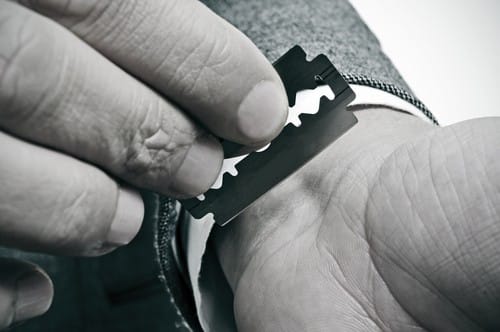Recovering from opiate addiction is no walk in the park. With something like heroin, symptoms can occur within 12 hours of the last high, causing addicts several days of sheer misery. Some addicts have no other choice but to detox on their own, suffering the miserable consequences of their addiction. In some ways, if they can make it past that second day, they have a good chance for a successful detox. Some, however, have the opportunity to go to treatment, which provides addicts the benefit of supportive care and medications to ease the pain and discomfort of withdrawal. A common medication used for this is called Suboxone (bupenophine and noloxone) and purportedly shortens the length of the detox while also treating the withdrawal symptoms. It’s also used for long-term maintenance much like methadone has been used in the past, sans the stigmatization. A prescription for Suboxone means you don’t have to stand in a clinic line for your daily dose, but rather, you get your 30-day rx from a physician.
There are three phases to the using Saboxone in opioid addiction therapy. The induction phase, which is a “medically monitored startup” of the medication, begun 12-24 hours after the addict has abstained from opiates and is in the early stages of withdrawal. This is typically done under observation in the doctor’s office. Next is the stabilization phase, which happens when the patient has “discontinued or greatly reduced” the use of their drug of abuse and is suffering from little to no cravings. Last is the maintenance phase, which culminates in a “medically supervised withdrawal.”
Nothing is ever that simple, though, when it comes to treating addiction. While Suboxone certainly has its value for assisting with opiate withdrawal and turning people’s lives around, there is a dark side. It is just another opiate after all. Some addicts will inject it, some will take more than their prescribed dose, if just for a brief bout of euphoria. Suboxone reportedly has a “ceiling effect,” which means it levels off after a certain amount. Additionally, the naloxone component of the drug is supposed to “precipitate withdrawal symptoms” when the drug is injected. Still, the state of Maine has reported some pretty disturbing news events surrounding Saboxone, with reports of the drug being smuggled into prison, hidden behind postal stamps and kids’ coloring pages. Prison smuggling of this drug is widespread, creating problems from New Mexico to Massachusetts.
Despite the reports of abuse and prison smuggling, the use of Saboxone is still proving to be a promising component to treating opiate addiction. Some experts suggest more training for physicians and tighter regulation of the drug in order to address the rate of abuse. This is definitely something the recovery industry will be paying attention to.
Related articles:
Understanding Drug Addiction Withdrawal (everydayhealth.com)
When Children’s Scribbles Hide a Prison Drug
Getting High on Suboxone? The FDA Says It’s Happening









